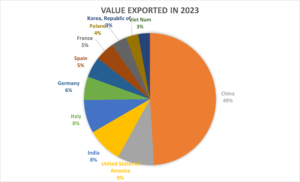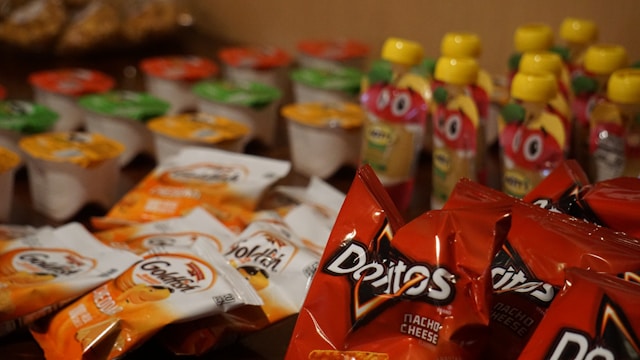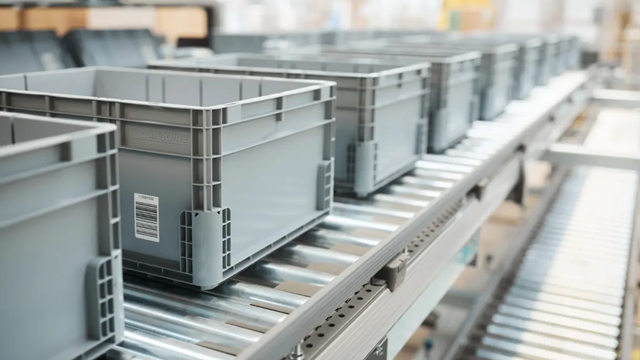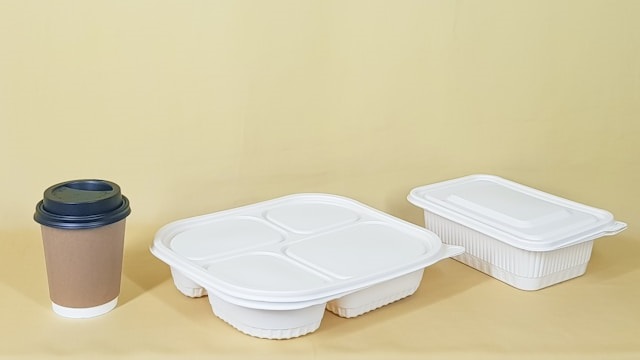Flexible packaging, categorized under HS Code 392329, plays a crucial role in the global economy, with trade volumes reaching impressive figures worldwide in 2023. In this blog, we explore the global landscape of flexible packaging imports and exports, the top importers and exporters, and detailed insights into specific regions, such as the Middle East and Eurasia.
Understanding HS Code 392329: Flexible Packaging
HS Code 392329 refers to “Flexible Packaging Articles” made of plastics (excl. those of polymers of ethylene), which are commonly used for a wide variety of products, including food packaging, medical packaging, consumer goods, and industrial products. These packaging materials are characterized by their ability to be molded into various shapes and sizes and are typically lightweight and durable. This category is essential in industries that rely on packaging for product protection, convenience, and branding.
The items classified under HS Code 392329 include:
- Bags
- Pouches
- Sucks
- Other flexible plastic packaging products
Given their versatility and increasing demand for eco-friendly solutions, flexible packaging products have gained significant attention globally.
Global Export and Import Overview of Flexible Packaging (2023)
Global Export Volume in 2023
The global export volume of flexible packaging under HS Code 392329 for the year 2023 is valued at $6,684,719,000. The largest exporters of this product include:
- China: $2,303,025,000
- United States: $421,552,000
- India: $404,964,000
- Italy: $381,937,000
- Germany: $269,402,000
These top exporters significantly influence the global supply chain, offering a wide range of flexible packaging solutions used across various industries, including food and beverage, consumer goods, and pharmaceuticals.
Global Import Volume in 2023
On the import side, the total global volume of flexible packaging imports in 2023 is valued at $5,408,697,000. The leading importers are:
- United States: $439,610,000
- United Kingdom: $324,170,000
- Mexico: $300,199,000
- Germany: $287,269,000
- France: $276,539,000
These nations rely heavily on imports to meet the increasing demand for flexible packaging in their local markets, driving the international trade dynamics.
Top Importers and Exporters: A Closer Look (2023)
The table below highlights the trade volumes for the top importers and exporters of flexible packaging in 2023.
| Rank | Country | Export Volume (in $000) | Import Volume (in $000) | Average Import Duty |
|---|---|---|---|---|
| 1 | China | 2,303,025 | 2,981,000 | 30% |
| 2 | United States of America | 421,552 | 439,610 | 1.8% |
| 3 | India | 404,964 | 1907,000 | 4.9% |
| 4 | Italy | 381,937 | 181,757 | 2.1% |
| 5 | Germany | 269,402 | 287,269 | 2.1% |
These nations dominate the trade of flexible packaging, with significant volumes of both exports and imports, demonstrating their pivotal roles in the packaging industry.
Regional Insights: Middle East and Eurasia Imports (2023)
Now, let’s take a closer look at the imports of flexible packaging from countries in the Middle East and Eurasia, which are key players in the global trade of packaging materials in 2023.
Uzbekistan
Uzbekistan’s import of flexible packaging in 2023 totals $3,442,000, with China being the largest supplier, contributing $2,981,000 (average import duty: 30%).
United Arab Emirates
The UAE has a significantly higher import volume of $48,323,000, with China and India being the largest suppliers. The average import duty in the UAE is relatively low, with a rate of 5% for most suppliers.
Turkey
Turkey’s total imports of flexible packaging in 2023 stand at $37,045,000, with Belgium and Italy being the top suppliers, both enjoying a 0% import duty.
Tajikistan
Tajikistan imports flexible packaging worth $1,273,000, with the majority coming from Ukraine and China. The import duty varies, with some countries like Uzbekistan and Russia benefiting from 0% duties.
Russia
Russia has a significant import volume of $57,677,000, primarily sourced from China, Germany, and Korea, with a modest average import duty of 4.9% to 6.5%.
Pakistan
Pakistan’s imports of flexible packaging in 2023 total $3,411,000, with China being the dominant supplier at a high import duty rate of 20%.
Kazakhstan
Kazakhstan imports $7,144,000 worth of flexible packaging, mainly from Russia and China, with relatively low import duties ranging from 0% to 6.5%.
Iraq
Iraq’s flexible packaging imports in 2023 stand at $25,357,000, with China and India being the largest suppliers.
Azerbaijan
Azerbaijan imports $4,588,000 of flexible packaging in 2023, with major suppliers including Turkey, Iran, and China, all subject to 15% import duties.
Key Insights and Conclusion
- China’s dominance in both exports and imports of flexible packaging is unmistakable, as it remains the largest exporter and one of the largest importers in the world in 2023.
- The United States stands as a significant importer, although its export volume is lower than that of China. This reflects the domestic demand for flexible packaging in various sectors.
- Countries in the Middle East and Eurasia exhibit varied import patterns, with some benefiting from low or zero import duties, while others face higher tariffs, which could influence trade relationships and pricing strategies.
- Trade dynamics in these regions are largely influenced by the local demand for packaging solutions, as well as trade policies and import duties that vary significantly across borders.
In conclusion, understanding the trends in global imports and exports of flexible packaging for 2023 provides valuable insights into the economic forces driving the packaging industry. Countries with high import duties, like Pakistan, may face higher costs, which can influence local pricing and competition. On the other hand, nations with lower tariffs, such as the UAE and Kazakhstan, have a strategic advantage in accessing cost-effective packaging solutions.
For companies in the packaging industry, staying informed about these trade dynamics is essential for making strategic decisions in sourcing and distribution.












